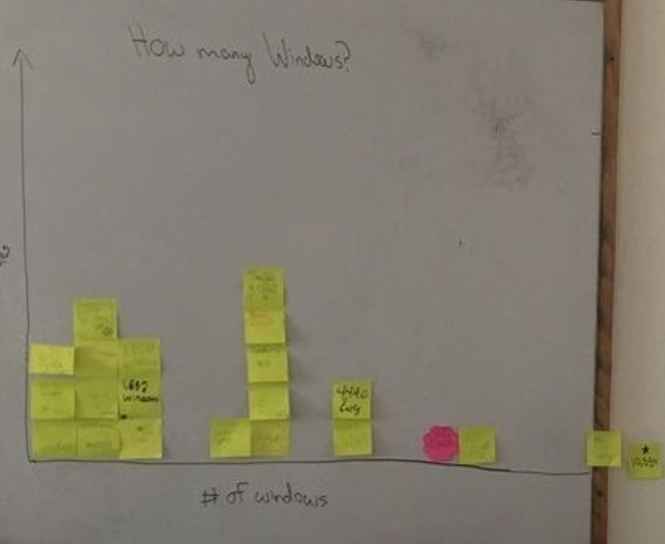By
Jen
McAleer, posted May 22, 2017 —
1. Establish a
routine: It is important to establish a routine, so that students can rely on
regularity and learn to expect this type of mathematics every day. Pick a time
daily or weekly to devote to estimation. Carry over the work to a next class
period, depending on the depth of the math involved.
2. Provide
students with a way to show their thinking and keep track of their estimations
over time: I use a graphic organizer, which allows students a
chance to make high and low estimates. We call this “low-entry access” to tasks
because it’s safe. We share these estimates as a class but do not discuss
reasoning at this point. After discussion, I want the students to settle on
their choice to see where their numbers fall between the high and low estimates.
It is important to note that I never let a student make an estimate without also
asking that he or she justify the choice; I want to make sure that the student
is using the given information and
mathematics to devise an answer. This is not a quick process. Some students
will take more time than others. I do not lead this discussion because I want
to see students’ thinking. If students finish quickly, I ask, “How did you get
that answer? Is there a different way you could think about it? How did you
know to do that?”
3. Give
students ample time to reason on their own: Never rush the process.
Depending on the richness of the task, I want my students to think on their own
for at least 5 minutes. This time gives them the opportunity to (1) make sense
of the information they have, (2) develop an approach or strategy to find a
solutions, and (3) develop a justification for their number. If particular
students reveal their strategy, students will never have the chance to adjust
their thinking in the future.
4. Display the
estimations in a meaningful manner, so that all students can see all estimates: I provide an
area in the classroom for students to display their number choice. Students
write their estimates anonymously on a sticky note and place it on a number
line, which can either contain or not contain a scale. I want students to
reason where to place their estimates relative to those already on the wall, thus
offering a chance to develop their number sense and to understand the magnitude
of numbers. Once all have placed their estimates, I ask the students to come to
the number line in groups to look over the placements. If they would like to
move any sticky note, we discuss the findings as a class and make the
adjustment. See the example below.

5. Throw out or
disregard any estimates that are unreasonable and explain why: I ask students if
they see any unreasonable estimates. Whenever a student proposes an estimate that
is believed reasonable, they must also state why: “I think _________ is
unreasonable because _________.” We then debate and weed out estimates.
6. Discuss students’
strategies and how they evolved: Step 6 takes practice. I ask students
to share their estimation strategies and then allow the class to ask clarifying
questions and agree or disagree with any of the reasoning. Since there is not
enough time for every student to share, I am very intentional in my choice of
sharing the strategic thinking of students by identify those students while
asking questions earlier in the process. Steps 5 and 6 are the most important and
subsume the most time. Sometimes we are unable to finish the discussion.
7. Allow time
for students to adjust their estimations as the discussion progresses: After the class
discussion, I allow and encourage students to update their choices. I want them
to look at their estimates and rework their thinking along the way. It is common
when viewing their the graphic organizer to see the “actual estimate” crossed
out multiple times and changed before the answer is revealed. Although the original
sticky-note estimates stay on the wall, it is important to encourage students
to rethink their process along the way.
8. Reveal
answers, discuss why the answer was or was not surprising, and how students
could adjust or be more effective with their estimations: The answer is
not as important as the process. Where did our process lead us? What did we
learn from our approach? What could we change in the future to be more
accurate?
In the next post, I will share two examples of estimation lessons
and the discussion that followed.
.png)
Jen McAleer is the head of middle school mathematics
(grades 6–8) at the Carroll School in Lincoln, Massachusetts. The Carroll
School serves students with language- based learning difficulties who also tend
to struggle with mathematics. McAleer has been teaching middle school for ten
years and has a passion to give all students a voice in mathematics and provide
them with opportunities to be and feel successful working with higher-level
content, despite their struggles with procedures and computation.